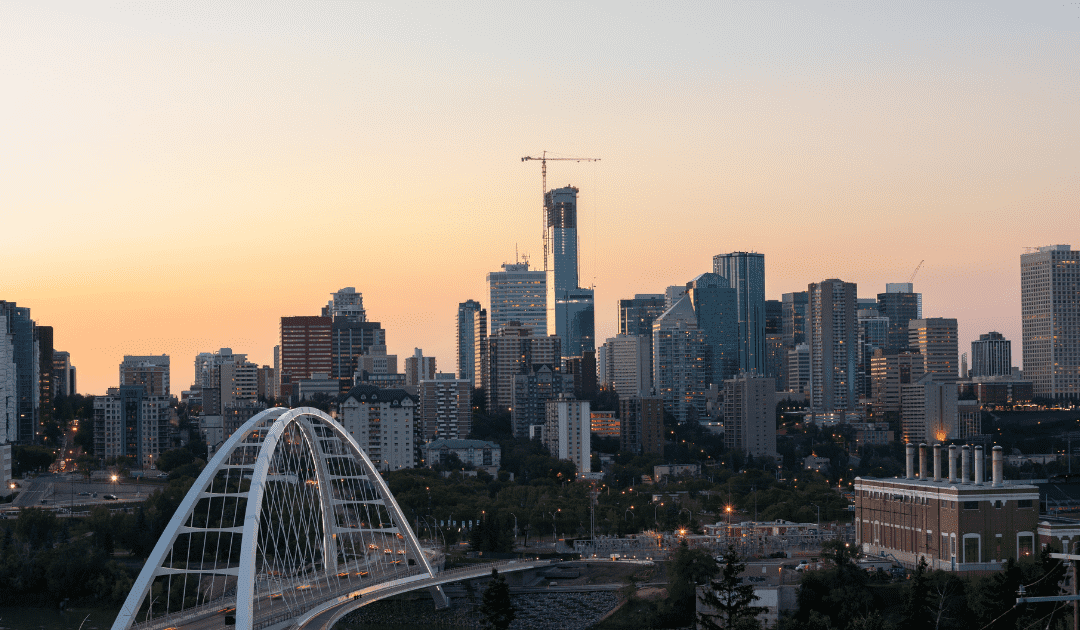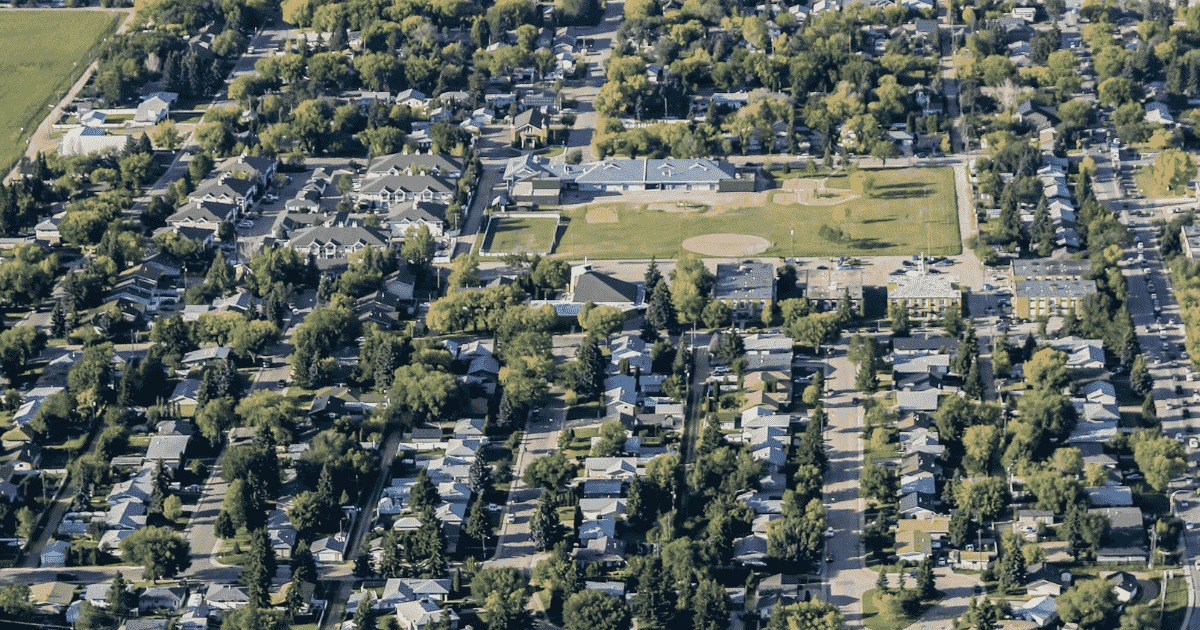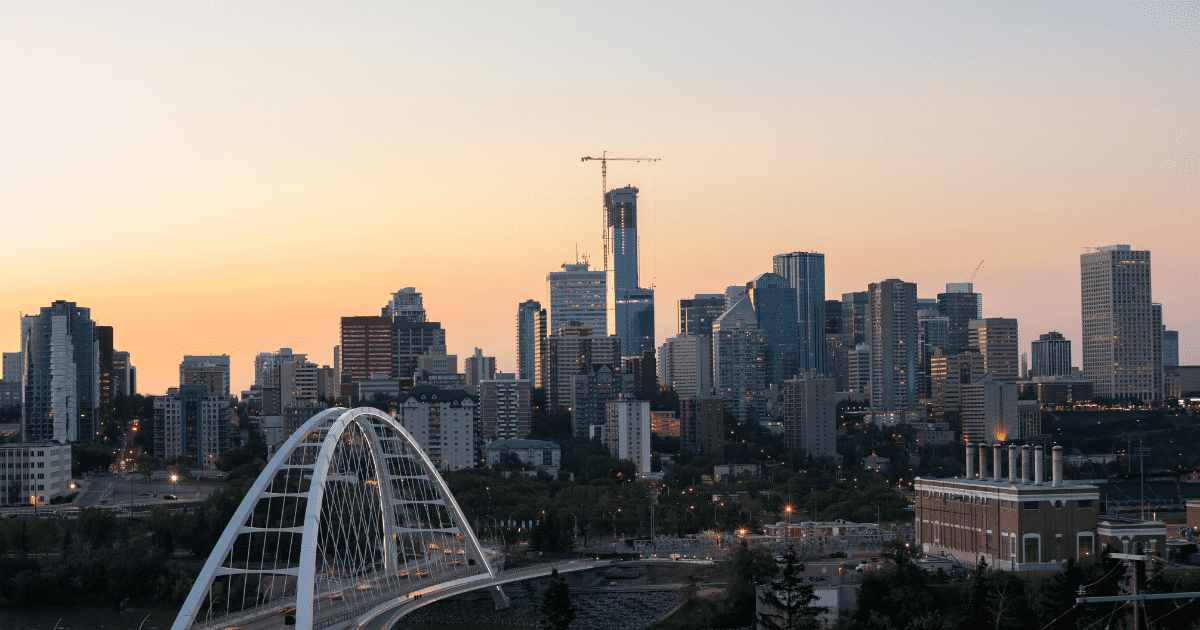While cities across Canada struggle to find momentum in what is typically the industry’s busiest season, Edmonton stands out as an exception, positioned for a typical—and notably strong—spring market.
According to industry experts, the city’s affordability, combined with strong demand and limited inventory, has helped keep the market resilient even amid global trade tensions.
Edmonton remains ‘hottest’ market in Canada
“Edmonton is still the hottest real estate market in Canada right now,” says Robert Hogue, assistant chief economist at RBC. “Inventory is getting tighter, and prices are rising in the 10 to 12 per cent range year-over-year.”
Local brokers, including Tom Shearer, broker/owner, Royal LePage Noralta Real Estate highlights the influx of buyers from other provinces, particularly Ontario, drawn by the city’s affordability.
“For a city of over a million people, Edmonton is the most affordable in the country,” Shearer notes.
With a steady flow of migration, a booming luxury market and prices continuing to climb, experts agree that Edmonton is well-positioned to weather the storm and maintain its momentum throughout 2025.
By the numbers
According to the Realtors Association of Edmonton, March sales of 2,494 were up 36.9 per cent from February and 1.3 per cent from a year ago. The average home price reached $460,685—up 2.5 per cent from February and 9.3 per cent year-over-year.
Edmonton, a stark contrast compared to markets like Calgary, where sales were down 18.7 per cent year-over-year, Toronto, down 23.1 per cent and Vancouver, down 13.4 per cent.
Hogue explains the market in Canada is slowing with resales dropping quite significantly, pretty much across the board— not everywhere, but in most markets. The recent numbers indicate a significant slowdown and it’s almost impossible not to link this with the uncertainty in the economy, particularly related to tariffs and the trade war with the U.S, which is having a major impact on consumer confidence.
Potential homebuyers have decided to wait it out on the sidelines until things settle down, Hogue says. Just not in Edmonton.
“It’s still very strong, with very high levels of activity. Inventory is getting tighter, and prices are rising in the 10 to 12 per cent range year-over-year. So that market still has quite a bit of momentum,” explains the economist.
“It probably hasn’t completely escaped the trade uncertainty and is likely seeing some headwinds as well. But if you zoom out from that factor, it’s a market that still carries a lot of momentum.”
Edmonton seeing limited inventory and confidence in the local economy
Shearer said looking in the rearview mirror he would describe the market as being very strong.
“We are up year-over-year in pricing across all categories. We’re just ahead of last year in total sales volume. Last year was a record-breaking year, and we had incredible momentum building through the fall and holiday period,” he notes.
“Aside from a short period of time when it was very, very cold across Canada, but specifically here in Edmonton, the market was really strong. I would say that things are going very well here in Edmonton now. I’ll put the caveat on that—there’s uncertainty. Over the last few weeks and days, just with what’s going on in the (stock) markets.”
Shearer says buyers are excited, there’s limited inventory and Edmontonians are feeling confident in their local economy. He adds, that despite the incredible migration and flurry of sales activity it hasn’t seen the dramatic price jump that a lot of other regions experienced as people started finding different markets.
“When you think about Ontario, they went up 25 per cent year-over-year, and sometimes even month-over-month. And we’ve just been maintaining that nice, slow build of eight to 12 per cent year-over-year increases. And I think that’s kept everything a little bit more in reach for a lot of people.”
He said a few factors are contributing to the busy spring market. First, fear of missing out: the city still has limited inventory. So, if someone finds the right house, they want to jump on the opportunity, because if they don’t, someone else will.
New construction quickly absorbed and land prices are high
Shearer added that a lot of new construction has already been absorbed—whatever they were building last year has already been absorbed—and that means there’s just not a lot of new construction available. And land is expensive.
John Carter, broker/owner of Re/Max River City, says Edmonton is standing tall against the current economic uncertainty and political climate for a few reasons.
“It’s a combination of lower property price points for a major city, higher average incomes, lower taxes, and a lower cost of living. On top of that, housing costs are lower,” he says. “The best quote I’ve seen from someone else is that our market will continue to boom as long as people are migrating here, mostly from Ontario but also from elsewhere in Canada and internationally.”
Carter highlights three underlying factors, “First, the housing zoning policy changed in October 2023, allowing for opportunities to build the missing middle—before it was missing. This has led to a ton of new construction, infill construction. The permitting process is now very quick, automated in many ways, and low-cost, which contributes to affordable new housing.
“Second, supply and demand factors. With so many people moving here, there just isn’t enough product to meet the demand. Values are going up, and people are confident that if they buy today, it will be worth more next year.
“Third, interest rates created urgency. Even when rates were higher, people were still buying because they knew values were going up. They would take a variable rate for a couple of years, expecting rates to go down, which they are now.”
Edmonton’s luxury market is booming?
Carter said that even with the tariff issues, the demand is still higher than supply, and what he’s noticed is that the luxury market is also booming in Edmonton—probably the most it’s ever seen in history in terms of MLS sales.
Darlene Reid, chair for the Realtors Association of Edmonton, described the Edmonton market as resilient.
“We kept seeing increases in prices across all our categories. Sales are still up year over year. Prices are up year over year, so it didn’t really impact us. In fact, I would say January and February were more active than what we had originally forecasted,” she said.
“A lot of the factors had to do with our supply issues. Our inventory levels were so low. When you compare Calgary to Edmonton in 2024, we started with much more inventory than Calgary. And we finished 2024 with Calgary’s inventory rising almost 40 per cent, and Edmonton’s dropping almost 40 per cent. So we started this year with very low inventory, which, combined with demand, drove the prices up. It was definitely a seller’s market.”
People moving from Calgary to Edmonton for affordability
If you look at the migration numbers, Edmonton has grown quite a bit with a lot of interprovincial migration,” she added.
“We’ve seen a lot of movement from Calgary to Edmonton just for the affordability. When you’re looking at the exact same house, dollar for dollar, there’s a $200,000 price difference.
“I know even Calgary’s been reporting a decline. Edmonton’s not seeing that. So I think Edmonton is very well positioned to weather this storm due to our affordability. When you look at the major cities across Canada, Edmonton is still one of the most affordable markets.”

Mario Toneguzzi is a contributing writer for REM. He has more than 40 years of experience as a daily newspaper writer, columnist, and editor. He worked for 35 years at the Calgary Herald, covering sports, crime, politics, health, faith, city and breaking news, and business. He now works on his own as a freelance writer for several national publications and consultant in communications and media relations/training. Mario was named in 2021 as one of the Top 10 Business Journalists in the World by PR News – the only Canadian to make the list.














A good summation of how Canadian Bank Economists need to be trained in reading MLS stats and why the modern realtor needs it even more.
I often wonder today is there any actual RELOCATION business being handled by Royal Lepage today or have they lost the Government of Canada contract because the incompetence of those being cited in this article suggests how relocating families move and what impact they have on mls stats is not even mentioned.
I wonder what percent of CREA members have actually been a realtor signatory to a Government Relocation Package on the buy or sell side?
Actually that may be a good poll for REM to run.
Actually Andrew could run regular polls for REM like those run for decades by GNOTHF which yes I know very realtors are even aware of.
REALTORs, your mls system database is a library of historical trading data that is not available anywhere else in the world today. You need to visit your mls librarian and ask where the Screwy MLS Decimal system information can be found.
I think paragraph 6 should say 2025 not 2024?
Thanks for flagging, Vicki!